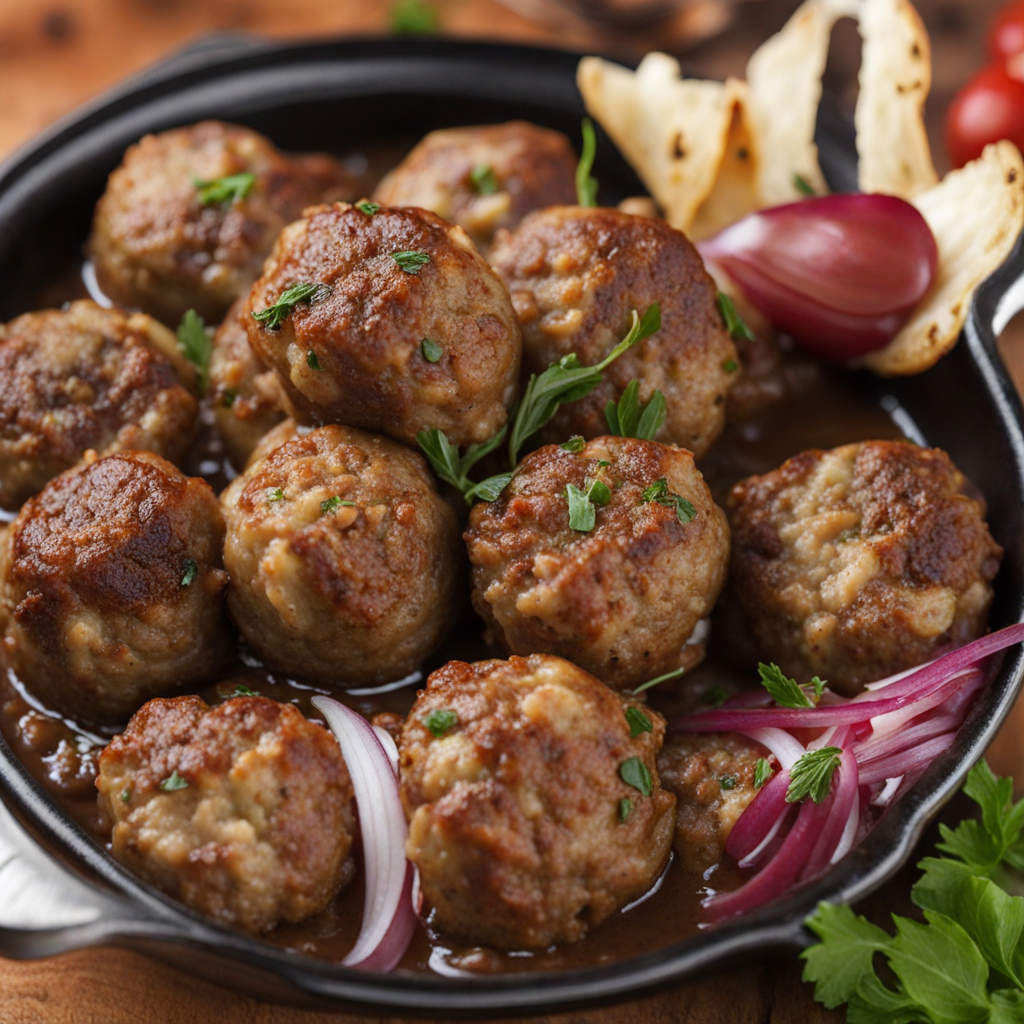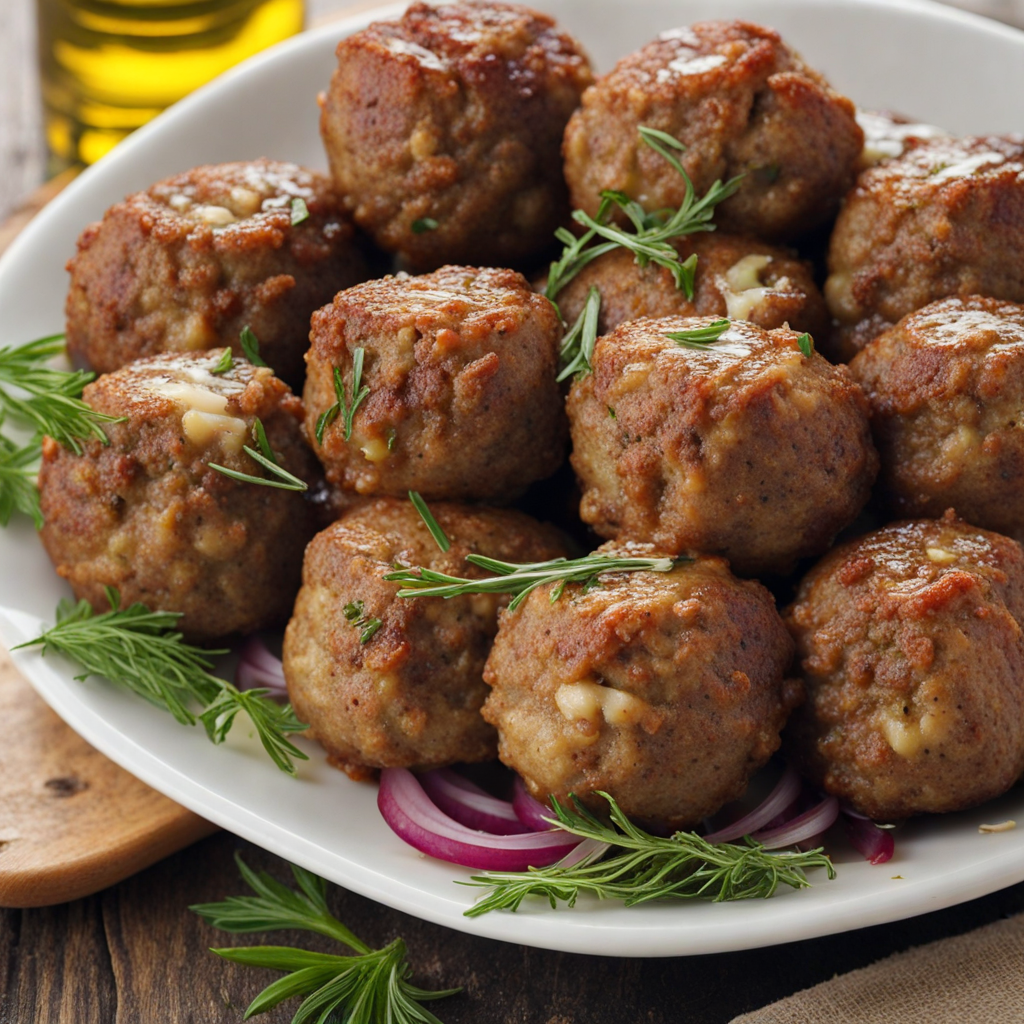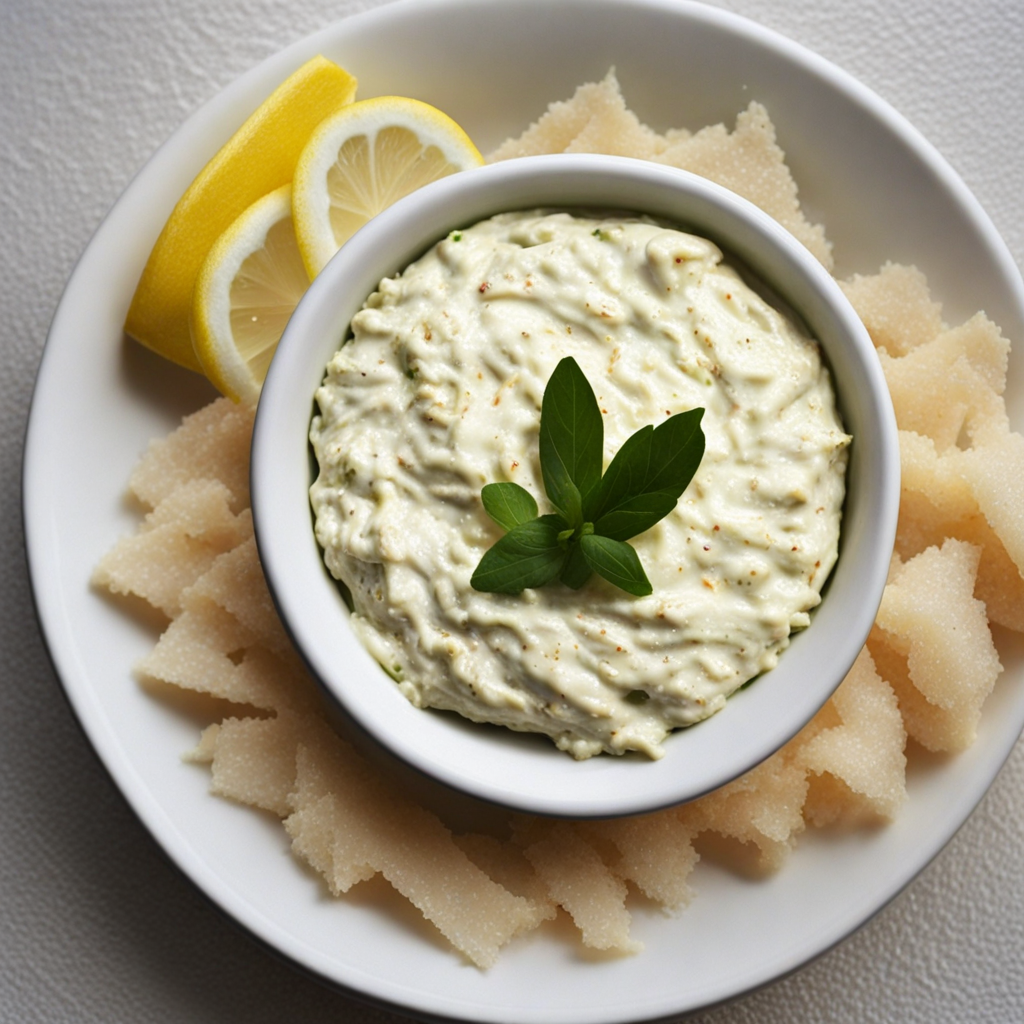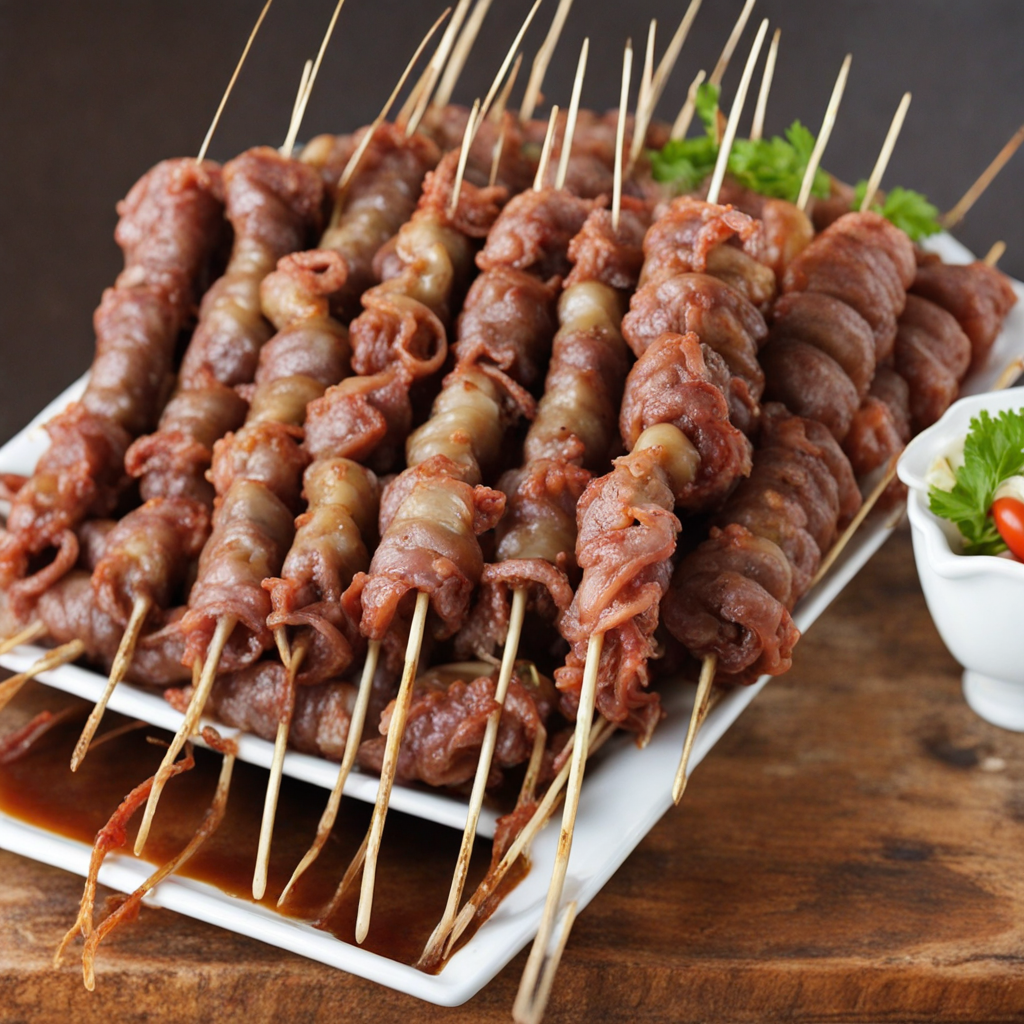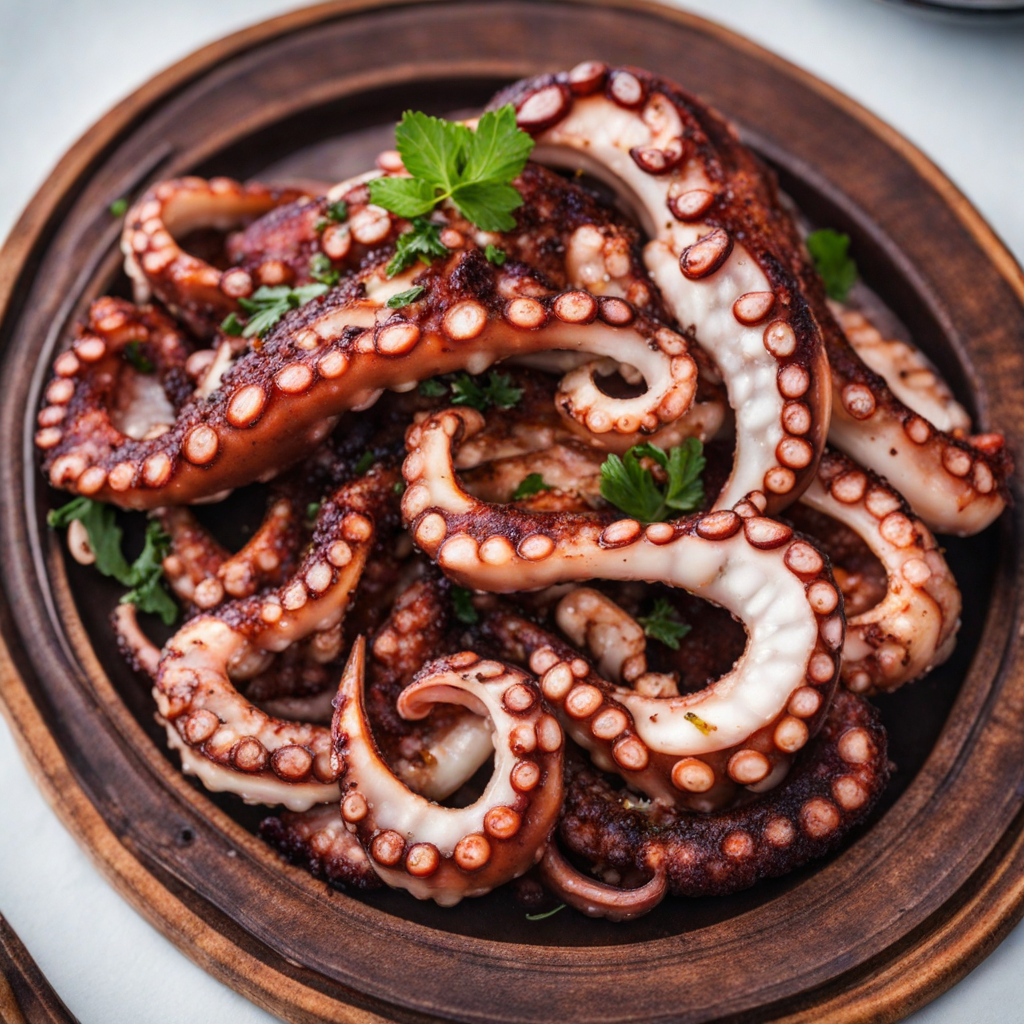Keftedes
Keftedes are delightful Greek meatballs that embody the rich flavors and culinary traditions of Greece. Typically made from ground meat, usually beef or lamb, they are mixed with a variety of herbs, spices, and other ingredients, such as onions, garlic, and breadcrumbs, to create a succulent texture and aromatic profile. The addition of fresh herbs like parsley and mint gives Keftedes a refreshing taste that is distinctively Mediterranean, while spices such as cumin and oregano add depth and warmth to the dish. The preparation of Keftedes involves shaping the seasoned meat mixture into small, round balls, which are then either fried or baked to achieve a perfectly crispy exterior while maintaining a juicy interior. When cooked, they develop a beautiful golden-brown color and an enticing aroma that fills the kitchen. Often served as an appetizer or part of a meze platter, they can be accompanied by a tangy tzatziki sauce or a simple squeeze of lemon, enhancing their flavor further and providing a delightful contrast. In Greece, Keftedes are more than just a dish; they are a celebration of communal dining and family gatherings. Enjoyed with a side of Greek salad, pita bread, or rice, these meatballs can be the star of any meal or a perfect snack. Their versatility allows them to be enjoyed warm or at room temperature, making them an ideal choice for both casual get-togethers and festive occasions. Discovering Keftedes is not just about tasting food; it's about experiencing a piece of Greek culture that is rich, vibrant, and full of warmth.
How It Became This Dish
The Fascinating History of Κεφτέδες: Greece's Beloved Meatballs #### Origins The story of Κεφτέδες (keftedes) is as rich and flavorful as the dish itself. This beloved Greek food, typically made from ground meat, breadcrumbs, herbs, and spices, has its roots in the ancient world. The concept of combining ground meat with various ingredients can be traced back to ancient civilizations, including the Greeks and Romans. The earliest forms of meatballs can be found in ancient Greek texts, where references to dishes made from minced meat suggest that the practice of mixing and forming meat into balls or patties was common among early Greeks. The term "keftedes" is derived from the Arabic word "kuftah," which itself comes from the Persian word "kufteh," meaning "pounded." This etymology reflects the rich cultural exchanges that have shaped Greek cuisine over the centuries, particularly through the Ottoman Empire's influence. As the Ottoman Empire expanded, so too did the culinary traditions, leading to the integration of various regional flavors and cooking techniques. #### Cultural Significance In Greece, Κεφτέδες are not merely a food item; they hold cultural significance and evoke a sense of nostalgia and home. Traditionally served as a meze (appetizer) or main course, keftedes embody the essence of Greek hospitality. They are often accompanied by tzatziki—a refreshing yogurt and cucumber dip—and served with pita bread or rice. This dish symbolizes the communal spirit of Greek dining, where sharing food is an intrinsic part of social interaction and celebration. Keftedes have also become a staple in Greek households, particularly during festive occasions, family gatherings, and Orthodox celebrations. Their versatility allows them to be adapted to various regional ingredients and preferences, making them a beloved dish across the country. In some regions, for instance, keftedes are made with lamb or beef, while others prefer pork or even vegetarian versions made from lentils or chickpeas, showcasing the adaptability and regional diversity of Greek cuisine. #### Development Over Time The evolution of Κεφτέδες reflects broader changes in Greek society and culinary practices. During the Ottoman period, the introduction of new spices and cooking methods enriched the flavor profile of keftedes. Ingredients such as mint, parsley, and various spices were incorporated, leading to a more complex taste. This period also saw the introduction of frying as a cooking method, which became a defining characteristic of the dish. In the early 20th century, as Greece experienced significant social and political changes, including the Asia Minor Catastrophe in 1922, many Greek refugees brought their culinary traditions with them, further diversifying the preparation and flavors of keftedes. The migration of populations not only altered the demographic landscape of Greece but also enriched its culinary heritage. The blending of Greek and Anatolian flavors resulted in myriad regional variations of keftedes, showcasing local ingredients and preferences. In modern Greece, keftedes have maintained their status as a beloved comfort food. They are commonly found in tavernas, restaurants, and homes, often served during family meals or casual gatherings. The rise of the health-conscious movement has also led to adaptations of the traditional recipe, with some opting for baked rather than fried versions, or using whole grain breadcrumbs and lean meats to create lighter alternatives. Moreover, the globalization of Greek cuisine has played a significant role in the popularization of keftedes outside Greece. As Greek immigrants settled around the world, they brought their culinary traditions with them, leading to the emergence of Greek restaurants in various countries. Keftedes have made their way onto international menus, often enjoyed by those unfamiliar with their rich history, yet drawn to their comforting flavors and textures. #### Regional Variations The beauty of Κεφτέδες lies in their regional variations, each telling a unique story of local ingredients and culinary traditions. In Crete, for example, keftedes are often made with a combination of local herbs like mint and spearmint, imparting a distinct flavor that reflects the island's agricultural bounty. In contrast, in the regions of Macedonia and Thrace, keftedes may be enhanced with spices like cumin or allspice, showcasing the influence of neighboring cultures. Vegetarian versions of keftedes have also gained popularity, particularly in urban areas and among health-conscious consumers. These variations are often made with chickpeas, lentils, or vegetables, offering a plant-based alternative that retains the essence of the original dish while catering to dietary preferences. #### Conclusion Keftedes are more than just meatballs; they are a symbol of Greek culture, history, and family traditions. From their ancient origins to their modern-day adaptations, these flavorful bites have navigated the complexities of Greek culinary history, evolving while remaining true to their roots. As a dish that brings people together, keftedes embody the spirit of Greek hospitality and the timeless joy of sharing food with loved ones. Whether enjoyed in a traditional taverna or a contemporary restaurant, Κεφτέδες continue to capture the hearts and palates of many, serving as a delicious reminder of Greece's rich culinary heritage. As culinary traditions evolve, the legacy of keftedes remains firmly intact, ensuring that this cherished dish will continue to be celebrated for generations to come.
You may like
Discover local flavors from Greece


